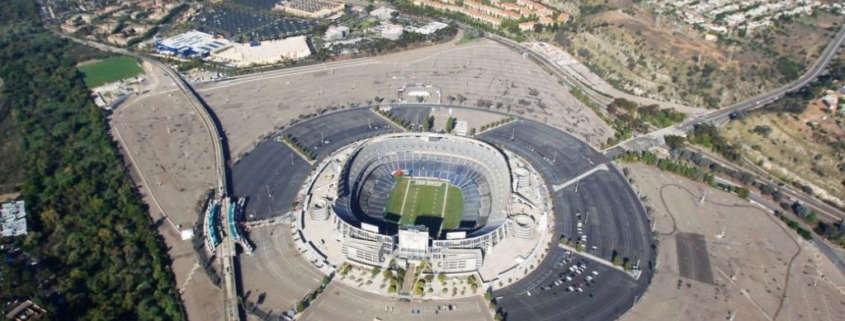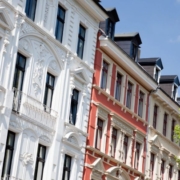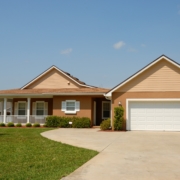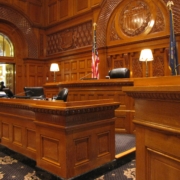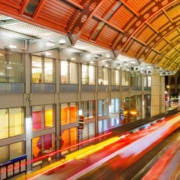The Stadium Proposals: Sometimes, Nothing is Better than Something
As part of this year’s midterm elections, San Diegans will be confronted with two competing ballot measures focusing on what to do with the land surrounding the iconic SDCCU Stadium (formerly, Jack Murphy Stadium and Qualcomm Stadium). The first ballot measure is Measure E, otherwise known as “SoccerCity.” Measure E is sponsored by FS Investors, a privately held investment firm with offices located in La Jolla and San Mateo. The second ballot measure is Measure G, otherwise known as “SDSU West.” SDSU West is headed by a steering committee calling themselves “Friends of SDSU.” Friends of SDSU is made up principally of local San Diegans, as well as SDSU Alumni.
At a glance, the Soccer City Proposal (Measure E) and the SDSU West Proposal (Measure G) might appear very similar. Both proposals offer to tear down the current decaying structure of SDCCU Stadium and replace it with a sprawling complex that includes not only a modern sports stadium, but would also accommodate entertainment, residential, retail and office space. Both proposals also aim to create generous park spaces along the San Diego River.
Each proposal has received glowing endorsement from various important individuals and organizations. The Soccer City Proposal has been endorsed by San Diego Mayor Kevin Faulconer, whereas the SDSU West Proposal has received the endorsement of former mayor and current Chamber of Commerce President, Jerry Sanders. The SDSU West Proposal has also received bi-partisan support from liberal organizations, such asThe Sierra Club, as well as conservative organizations, such as the Lincoln Society of San Diego.
Background:
SDCCU Stadium, was the home of the San Diego Chargers from 1967 until their return to Los Angeles in 2017. Previously known as Jack Murphy Stadium or “The Murph,” the site also played host to the San Diego Padres from their inaugural season in 1969 until the completion of Petco Park in 2004. In the 51 years of the stadium’s existence, it has become a known quantity in many San Diegan’s daily lives. This is partially because of its significance as the primary colosseum for sports in San Diego and partially due to its central location in the heart of Mission Valley.
SDCCU Stadium currently sits on 166 acres of land between the 8, 15 and 805 freeways, which effectively makes the stadium the crossroads of San Diego. From Chula Vista to Mira Mesa; from La Jolla to El Cajon, most of the city of San Diego is within 20 minutes from SDCCU Stadium. It should be no surprise, then, that two rival proposals for the site have sprung up hoping to earn the voter’s approval in this year’s midterm election.
Big Picture: What’s the Difference?
When looking at the two proposals, the first thing you’ll notice is the length. The SoccerCity Proposal is over 600 pages long including all the exhibits. By contrast, the SDSU West proposal is only 12 pages long. Whereas the SoccerCity Proposal attempts to be specific and nuanced about its plans, studies and timelines, the SDSU West Proposal is vague and ambiguous as to how and when they are going to achieve their proposed goals. The SoccerCity Proposal purports to identify what, when, how and where building will take place, but the SDSU West Proposal more or less leaves those specifics to be figured out after their measure passes.
The most apparent substantive difference between the two proposals is in how each project will be funded. Proponents of SoccerCity have proudly boasted that their plan would cost zero taxpayer dollars. Specifically, the initiative stipulates, “No public funds, subsidies, public bond issues, or public or municipal financing will be used to pay for any of the development or infrastructure on the Plan Area.” Instead, financing for construction of the complex would be left to the contractors and builders who, “may use a variety of financing methods”. The funding component has unsurprisingly become a central selling point for SoccerCity as proven through the hundreds of television commercials boasting that SDSU West will cost taxpayers millions of dollars in public funding.
A nuanced analysis of the SoccerCity Proposal, however, makes it clear that it is in fact the City of San Diego that will be financing a large part of their development. Under SoccerCity’s Measure E, FS Investors and their associates would lease the land under SDCCU Stadium and the surrounding area (233 acres) from the City to the financiers of FS Investors for 99 years for “fair market value,” as of February 2, 2017. The reality is that it is the City of San Diego that would be “carrying the paper” on this transaction while the investors maintain possession just as a residential landlord does with her own property.
Perhaps the bigger issue with the SoccerCity Proposal will be in determining the “fair market value” as of February 2, 2017. Similar to the Pontiac Silverdome in Michigan, there is a strong argument that, the value of the property in question–prior to a plan for redevelopment being in place — is de minimis. SDCCU Stadium is effectively a nuisance because the costs to maintain the stadium far exceed the revenue the stadium may be drawing in. Consequently, the “fair market value” at which SoccerCity would lease the property from the City is bound to drop accordingly.
By comparison, the SDSU West Proposal directs the City of San Diego to sell the land under the SDCCU Stadium (132 acres) to San Diego State University at a price “the City Council deems fair and equitable and in the public interest.” Details on how the construction of the stadium would be financed are unknown at the moment, but the expectation is that San Diego State University will “tap California State University bonding authority.”
Proponents of SDSU West posit that there is a legitimate need for SDSU to expand its campus. SDSU has been at its current location since 1931 and has expanded significantly within that nearly 90-year period. SDSU’s current campus sits at roughly 283 acres large with a student body approximately 35,000 strong, making it the second largest university in the county behind UCSD. However, despite SDSU’s relatively large size, it’s growth has been lacking for several years, partially due to a lack of land to expand upon. Despite the fact that applications to SDSU have skyrocketed in recent years, SDSU’s admission rates have remained largely stagnant from 2007 to 2016, whereas UCSD’s admission rates have risen by approximately 36% in the same timeframeA major benefit of Prop G is that it would not only provide a new sporting stadium, but it would also provide much needed room for SDSU to expand and remain competitive. SoccerCity naturally disagrees with this position and points to several areas on or around the current SDSU site where the university can expand, but is simply choosing not to.
On SDSU West’s face, there is something comforting about having a pillar of San Diego oversee and manage the development of an area that is so central to San Diego. It is also comforting to know that the City Council would retain control of the sale price to SDSU. That said, the sale price is effectively all the City Council would control; once the land is sold to SDSU, SDSU owns it outright and the City loses much of its oversight. A further challenge, is SDSU West’s ambiguity surrounding the means for financing and the timeline, both of which are completely missing from the SDSU West Proposal.
Tell Us How You Really Feel!
I think there are certain things that lend themselves to a ballot measure. Those items are limited to discrete ideas where politics or special interests have made it nearly impossible for the representatives of the City or State to act responsibly and disinterested. For example, things that affect campaign finance, gerrymandering, giving elected officials raises, or even whether to increase or decrease taxes are all appropriate discrete issues to put directly before the electorate.
On the other hand, when the idea at issue is a development project of the scale and size of SoccerCity and SDSU West, which includes so many moving parts, a forced sale or a forced 99 year lease , a ballot measure is ridiculous. I did not read the whole 600+ page proposal by SoccerCity and neither will any of you. On the other hand, the SDSU West Proposal leaves far too much to the imagination for my comfort level.
The fact is that the City of San Diego is the entity most well-equipped with the resources and experience to oversee and develop the SDCCU Stadium, not the voters. You start by looking downtown, from the Ballpark to Little Italy; you can then expand out to the surrounding communities– the City has done this over and over again successfully. There have no doubt been set backs in certain communities, Barrio Logan and East Village for example, but those set backs are part of the City’s resume now and should not be viewed in a vacuum. Quite the opposite.
The political and financial underpinnings of each of the proposals are troubling as well. Regardless of whether you support SoccerCity or SDSU West, there will be a financial boone to either victorious party. That financial boone must be part of a process that is inclusive rather than exclusive. Put another way, neither SDSU West nor SoccerCity should garner a windfall just because they gathered a bunch of signatures.
From a personal perspective, I’m not a fan of soccer. I take the Jim Rome approach to soccer and, with all due respect to some of my close friends who may be reading this, I would rather undergo a root canal than watch soccer. That said, I am but one San Diego resident. The reality is that soccer viewership has been steadily growing and San Diego is one of the biggest soccer markets in the US, ranking 9th overall.
That said, I do question whether a stadium is necessary or even warranted in that part of the city. That area is ideally situated for a mixed use, high density residential and retail expansion. With residential rental and housing prices going through the roof, that makes a lot of sense to me. Of course, some part of the area should also be used to address the growing needs of SDSU. Whether that includes the need for a stadium in that location is still up for grabs. A stadium in East Village probably makes more sense given the infrastructure already in place. As a keystone project, it could be used to revitalize East Village and bring in new developments. It could also be used to relieve the needs of an already overcrowded convention center.
At the end of the day, I hope that the San Diego voters remember that no on both is an option. Despite what has been advertised, this is not a choice between SoccerCity (Measure E) and SDSU West (Measure G). Rather, these are two proposals being pushed forward by competing special interests, each of which simply gathered enough signatures on their idea to put it before you—the voter—on the ballot.

